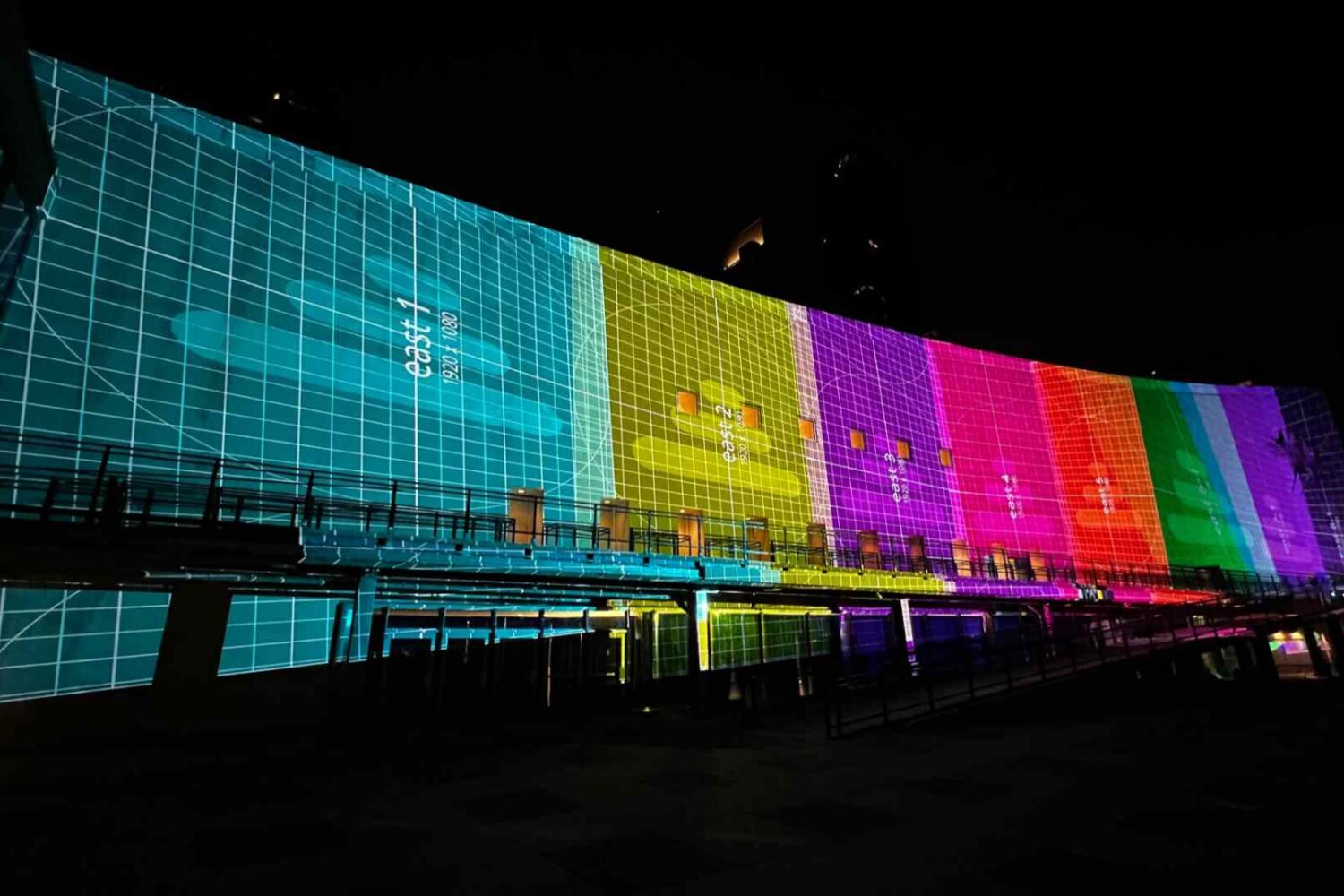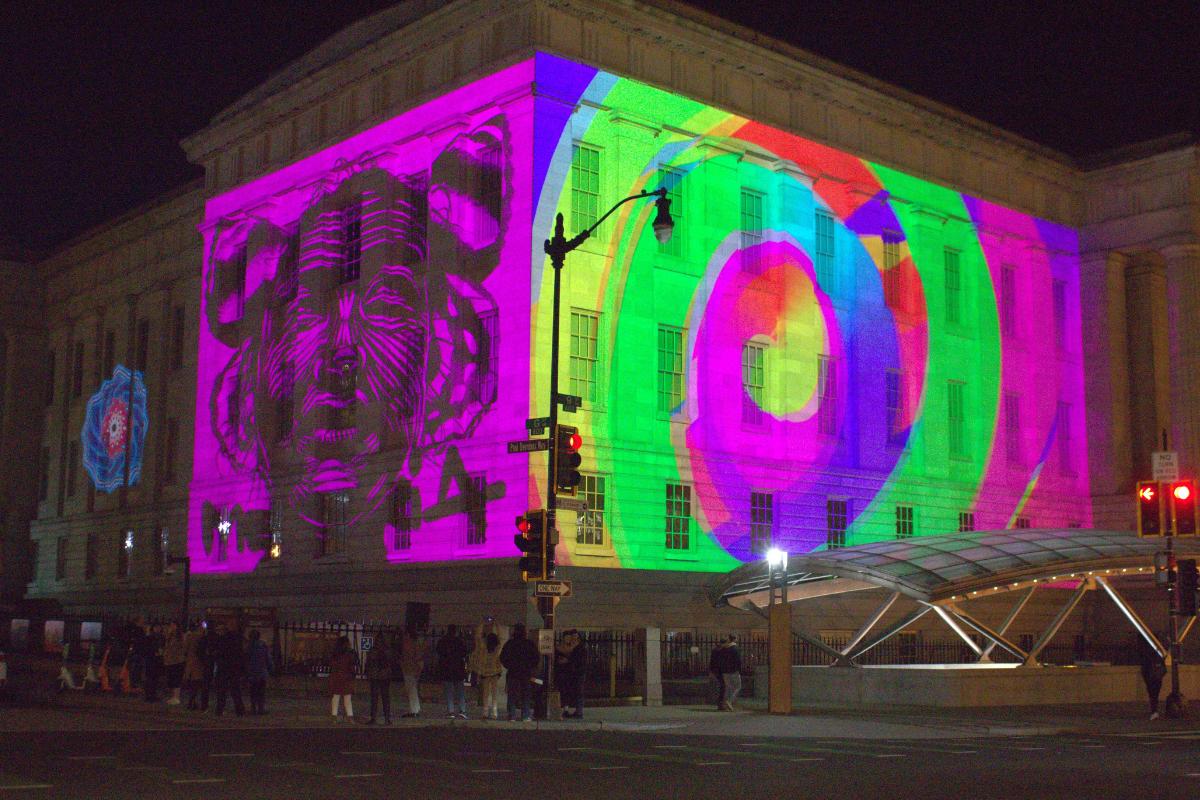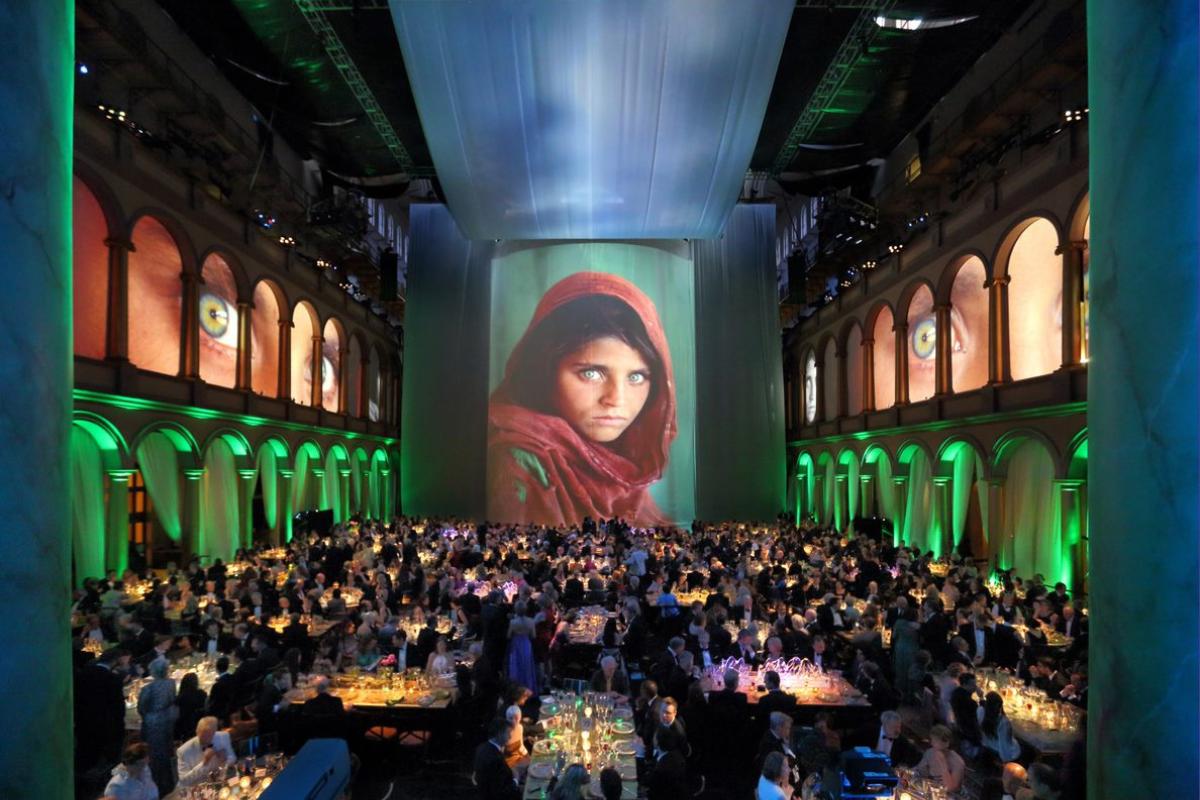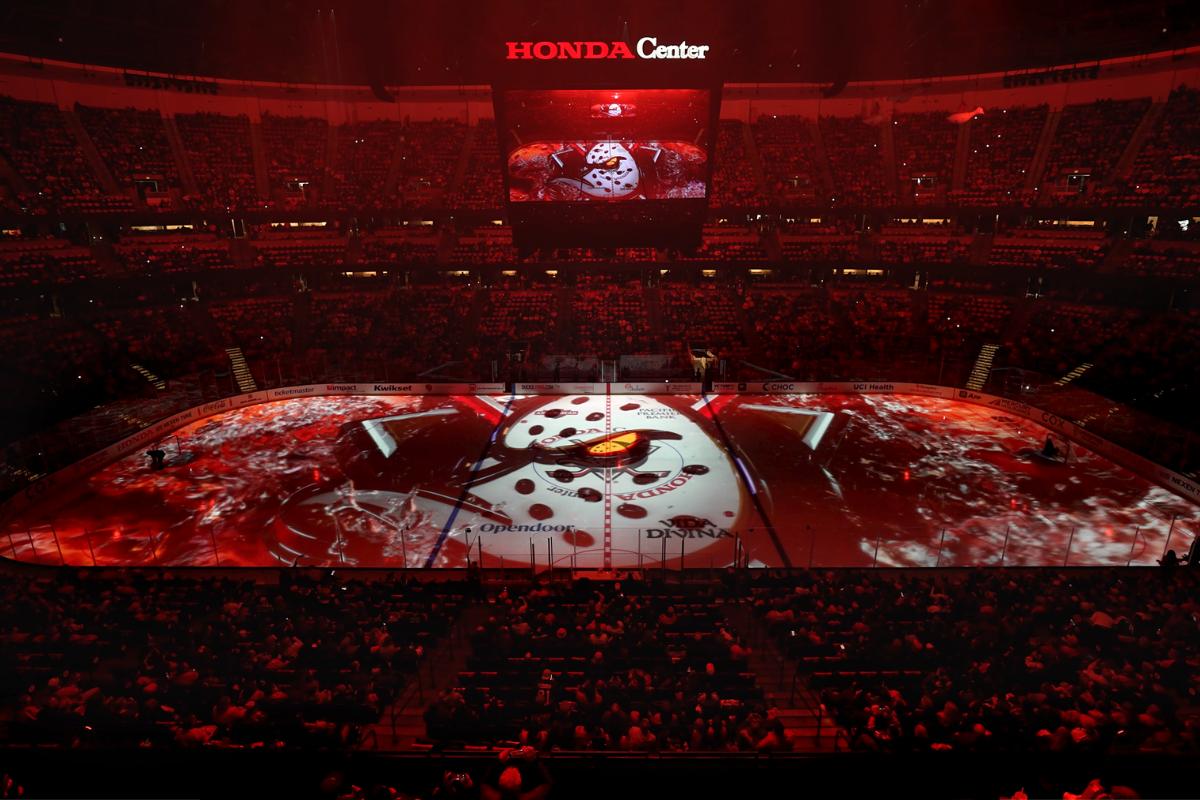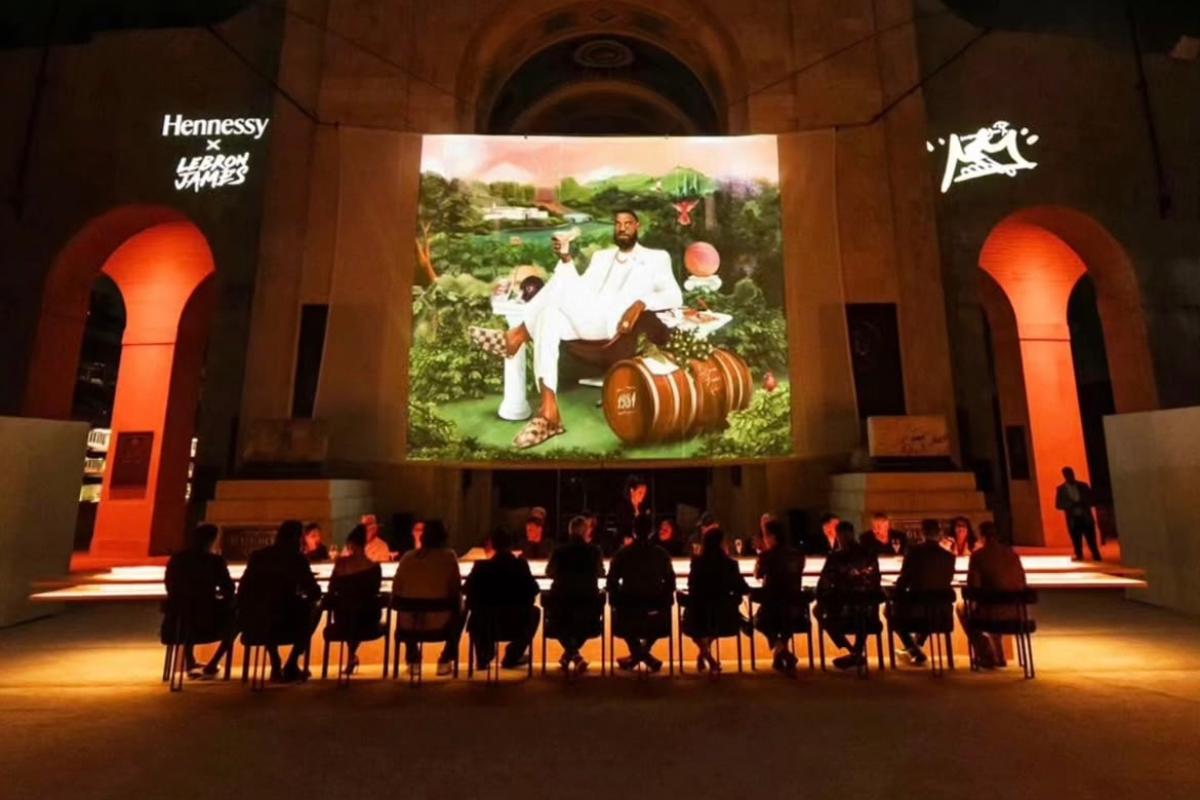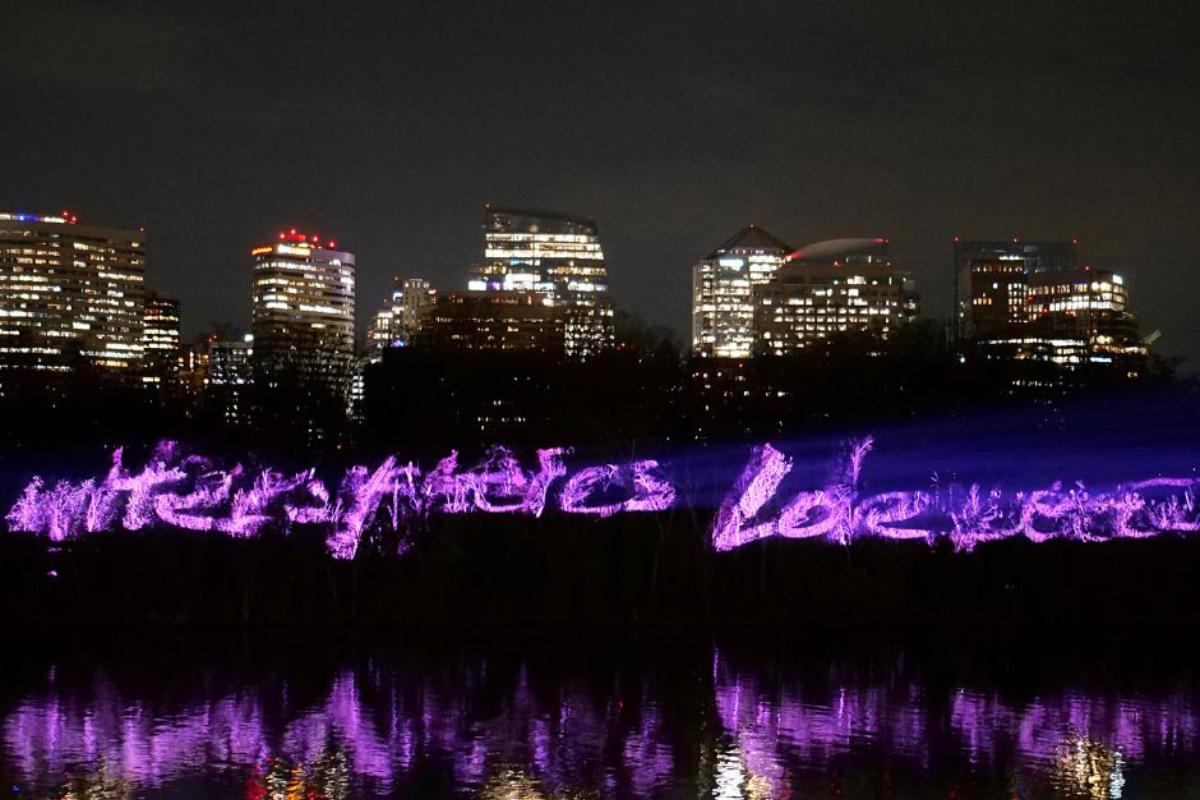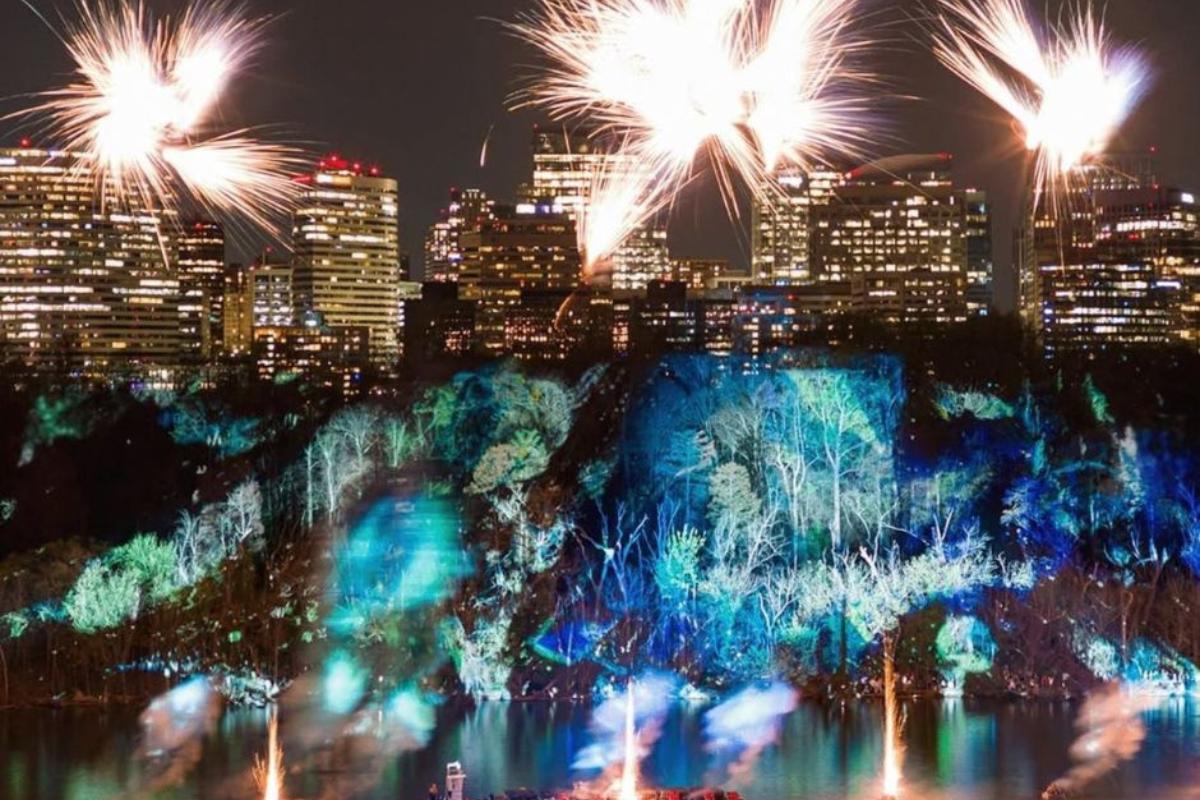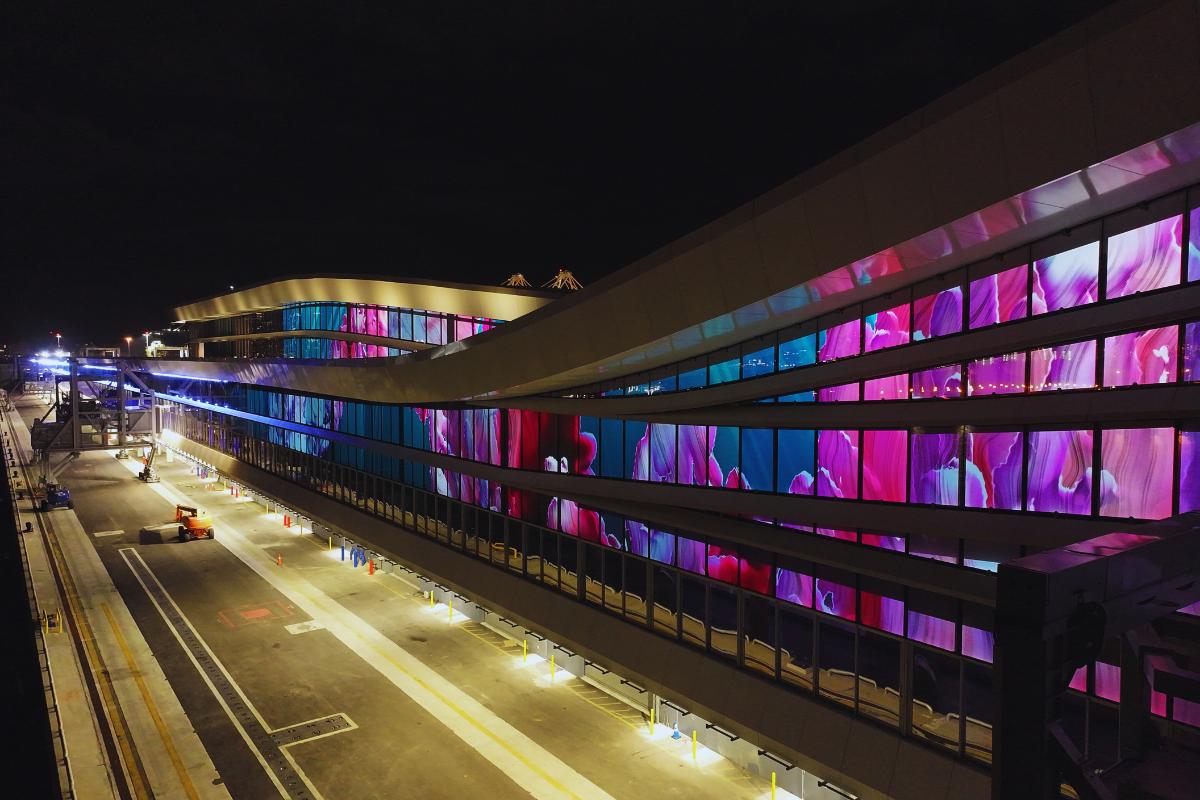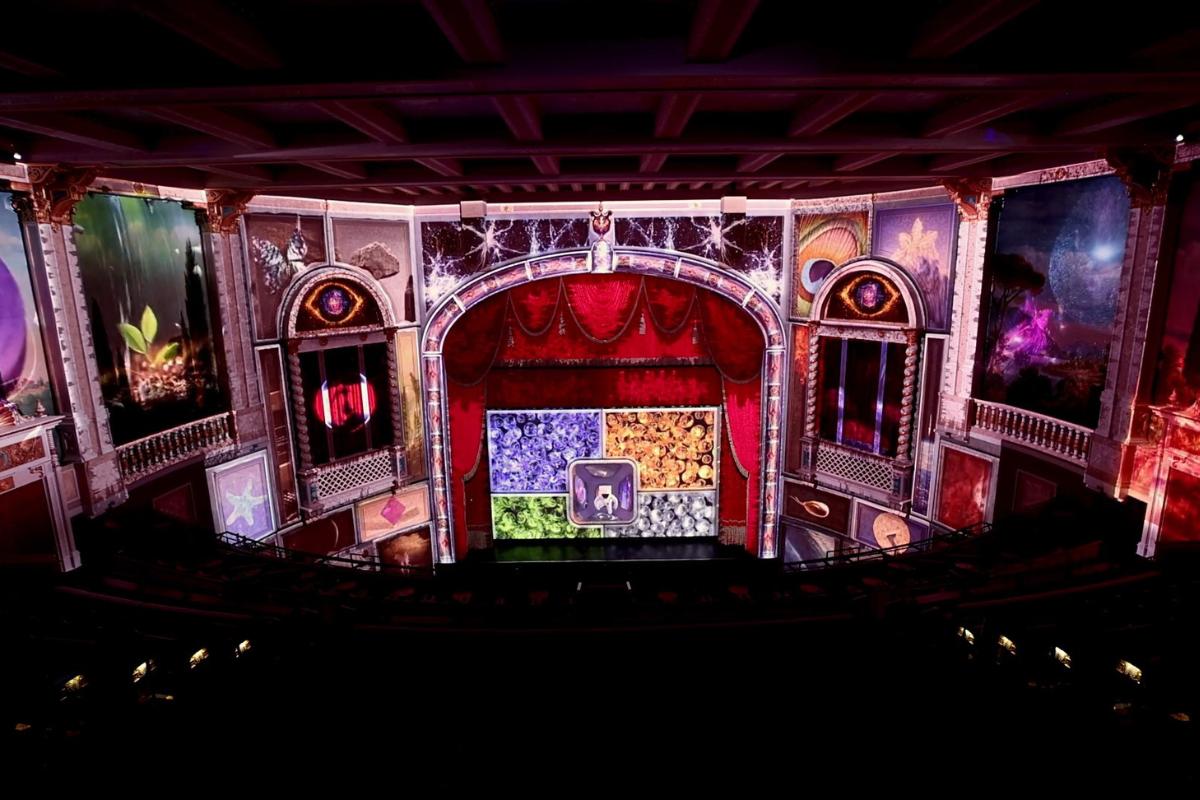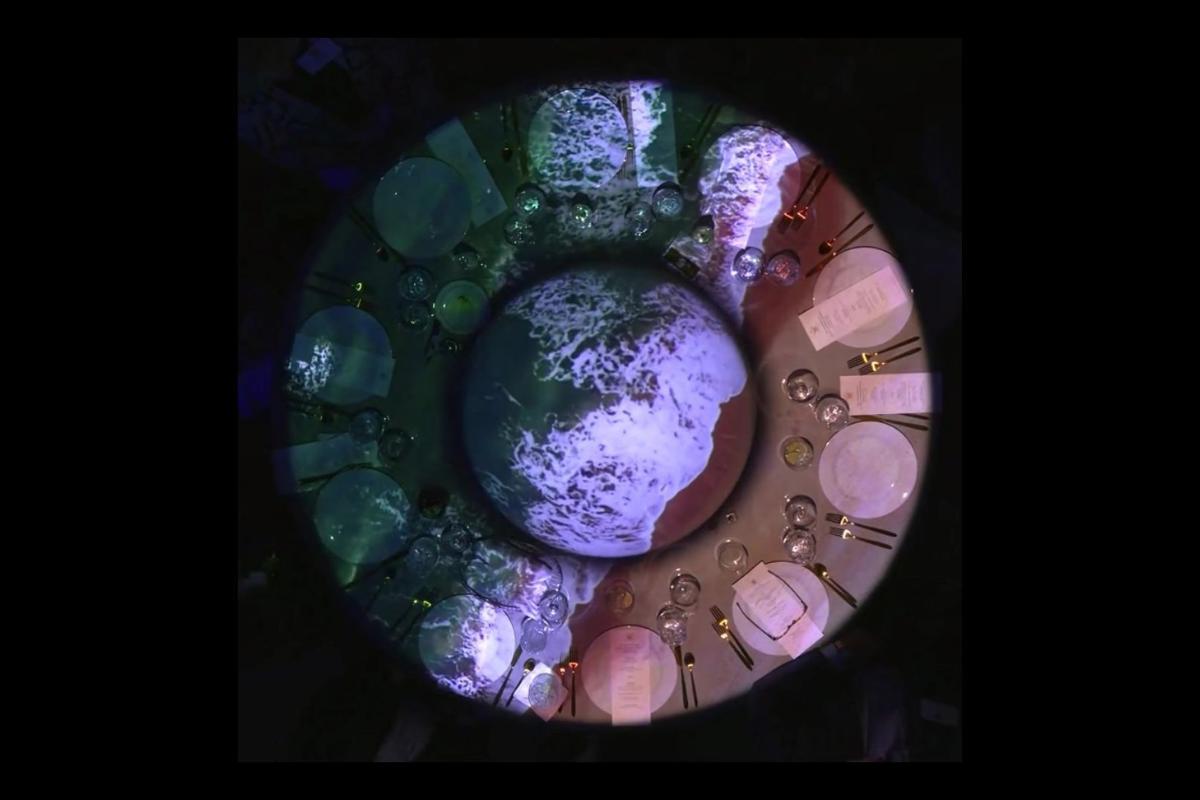Transform Any Space Into An Immersive Experience
Projection mapping has advanced far beyond flat walls and simple screens. With today’s innovations in projection brightness, motion tracking, and real-time rendering, nearly any environment can transform into a storytelling canvas.
At Quince Imaging, we’ve engineered projection systems for ice rinks, arenas, theaters, buildings, and even water surfaces each offering its own creative possibilities and technical challenges. This guide highlights the best locations for projection mapping, helping designers, producers, and technologists push the boundaries of immersive visual experiences.
Building Exteriors
Projection mapping on architectural façades transforms city landmarks into living works of art. Using high-brightness RGB laser projectors and 3D modeling, buildings become immersive canvases for storytelling and celebration.
Quince Imaging has illuminated icons like the United Nations Building in New York for the FIFA World Cup Activation, the Miami Beach Classical Music Festival’s holiday shows, and Day of the Dead in Washington, D.C.—each turning architecture into a shared visual experience.
Best for:
- Cultural landmarks, museums, and public celebrations
- Brand activations and large-scale corporate events
- Seasonal and community-driven art experiences
Challenges:
- Requires high-lumen projection, precise 3D alignment, and city permits or power planning
Interior Building Walls
Interior projection mapping transforms event spaces and architectural interiors into immersive storytelling environments. By using walls, ceilings, and large-format screens, projection seamlessly integrates with design and décor to elevate atmosphere and emotion.
Quince Imaging brought this to life at the National Geographic 125th-Anniversary Gala, where the venue’s grand interior became a living canvas of exploration and discovery.
Best for:
- Corporate events, galas, and immersive dining experiences
- Museums, universities, and cultural celebrations
Technical Considerations:
- Requires precise alignment and controlled lighting
- Needs careful power and projector placement within venue constraints
Sports Playing Surfaces
Sports arenas were among the first to embrace large-scale projection mapping, turning the court, field, or ice into a digital storytelling platform. Smooth, flat, and controllable, these surfaces are perfect for projection mapping. Examples like the Hank Aaron tribute at the MLB All Star Game, Anahiem Ducks and Vegas Golden Knights immersive ice projection show how projection can add drama, emotion, and fan interactivity in real time.
Best for:
- High-energy player introductions and pre-game shows
- Real-time stat displays and motion-driven visuals
- Fan engagement moments, sponsor reveals, and halftime activations
Technical Considerations:
- Requires precise calibration across multiple projectors
- Ambient light and reflective surfaces can reduce clarity
- Must stay perfectly synced with broadcast and game timing
Fabric, Kabuki Drops, and Scrim
Lightweight and flexible, fabric projection surfaces like kabuki drops and scrims create stunning, layered visuals ideal for stadiums, concerts, theaters, and live entertainment experiences. From the LeBron James x Hennessy collaboration at the LA Memorial Coliseum to Riot Games’ Lil Nas X hologram performance, these materials enable floating imagery, surprise reveals, and immersive depth that captivate audiences.
Fabric projection types:
- Kabuki drops: Hung overhead and released mid-show for dramatic effect
- Scrims: Semi-transparent fabrics that “disappear” when backlit
Technical Considerations:
- Sensitive to wind, movement, and ambient light, which can distort imagery or affect timing
- Require precise rigging, calibration, and lighting control for the best visual impact
Water and Mist Screens
Projection on water creates stunning, floating visuals perfect for storytelling and art. From Disney’s World of Color to the Kennedy Center’s Cai Guo-Qiang & cAI: Interspecies Love Letter-Sky Painting for EARTH to SPACE, projection and fireworks have merged to transform water and light into living art.
Best for:
- Lakes, fountains, and waterfront shows
- Public art installations
- Instagram-worthy moments
Technical Considerations:
- Wind, ambient light, and water distortion can affect clarity
Outdoor Surfaces
Projection mapping onto natural landscapes, like mountains, stone, and trees is an emerging trend in outdoor branding and nature-based public art. The organic textures and contours create breathtaking visuals when paired with soft, atmospheric animations that blend with the environment.
Best for:
- Outdoor venues, golf courses, parks, and resorts
- Storytelling and place-making experiences that evoke emotion
- Dusk or nighttime activations for optimal visibility
Technical Considerations:
- Uneven surfaces can distort imagery and require advanced 3D calibration
- Ambient light and weather conditions (fog, rain, wind) can affect clarity
- Power and projector placement in remote outdoor areas may require specialized rigging and logistics
Smart Glass and Switchable Windows
Smart glass, such as that developed by Gauzy, can instantly shift from transparent to opaque with a controlled voltage signal—turning architectural glass into a dynamic projection surface. Featured in installations like “Maris” at the MSC Cruise Terminal in PortMiami, this technology blends architecture, art, and storytelling to create living, responsive media façades that transform spaces in real time.
Best for:
- Lobbies, offices, transportation hubs, and retail environments
- Dual-purpose use as both a privacy screen and media display
- Integrations with interactive projection or touchscreen overlays
Technical Considerations:
- Heat from projectors can impact performance
- Needs reliable power and control systems
- Ambient light affects clarity
Venue Surfaces and Automated Scenery
Used extensively in theatrical and themed entertainment, these projection surfaces—such as moving walls, scenic elements, and robotic set pieces are tracked in real time to synchronize visuals with motion. Seen in projects like the Carolina Theatre restoration and Dollywood’s Dolly Parton Experience, this technique enables choreographed transitions, immersive storytelling, and seamless visual effects that bring environments to life
Best for:
- Immersive attractions and multimedia stage environments
- Real-time interactive or performance-based visuals
Technical Considerations:
- Needs advanced software like Pixera or Disguise for tracking
- Requires precise calibration and power management to avoid drift, heat, or vibration issues.
Art, Sculptures, and Table Tops
Mapping onto 3D objects such as sculptures, vehicles, or floating geometries creates stunning, dimensional storytelling experiences. This technique is featured in immersive art spaces like Meow Wolf and in William & Mary’s 3D projection-mapped tables, where visuals seamlessly wrap around physical forms for a fully interactive effect.
Best for:
- Contemporary art installations
- Awards, galas, brand reveals and product launches
- Museum exhibits and immersive galleries
Technical Considerations:
- Requires precise 3D modeling or LiDAR scanning to align projections with every curve and contour
- Calibration and content design must be exact to maintain realism and depth
The World Is Your Canvas
With today’s projection mapping technology, any surface natural or man-made, static or mobile can become a dynamic storytelling platform.
Whether you’re video mapping onto a stage, a ice surface, a building, or a sculpture, the key lies in understanding your canvas, engineering brightness and motion, and designing content that complements the physical form.
At Quince Imaging, we help you turn creative ideas into breathtaking projection experiences on nearly any surface imaginable.
Contact to discuss your project.

